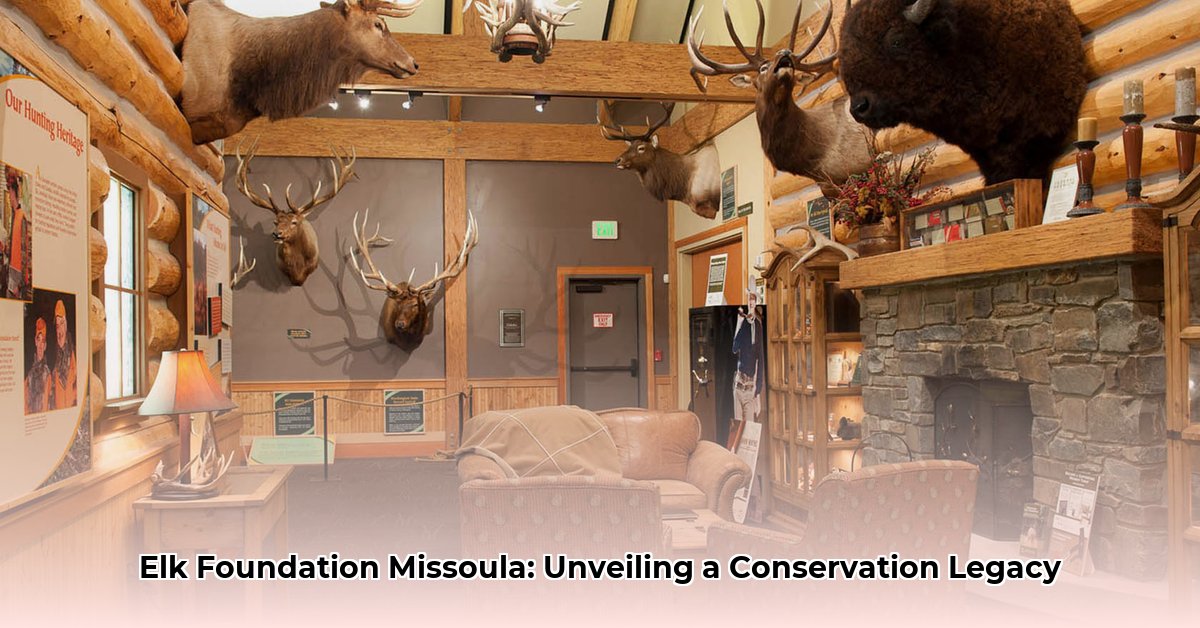
The Rocky Mountain Elk Foundation (RMEF), headquartered in Missoula, Montana, represents a significant force in American wildlife conservation. For over three decades, RMEF has dedicated itself to protecting elk and their habitat, impacting landscapes and wildlife populations across the American West. This case study examines RMEF's successes, challenges, and potential for future impact, offering a balanced perspective on its contributions to conservation.
A Legacy of Protecting Elk and Their Habitat
RMEF's mission extends beyond simply preserving elk populations; it encompasses the entire ecosystem. Their work recognizes that healthy elk thrive only within healthy habitats – a complex interplay of forests, meadows, and waterways. This holistic approach is reflected in their diverse projects, ranging from habitat restoration to land acquisition and public education initiatives. The foundation's commitment is rooted in a deep understanding of the interconnectedness of wildlife and their environment, a perspective deeply ingrained in the Montana landscape.
Measuring Success: A Need for Concrete Data
While RMEF's dedication is evident in its numerous projects and community engagement, a critical need exists for comprehensive data-driven impact assessments. While anecdotal evidence points to successes, quantifiable data on acres conserved, habitat restoration rates, and their direct effect on elk populations remain crucial for a complete understanding of the overall impact. Without this, it is difficult to definitively measure the success of their strategies and showcase the true magnitude of their accomplishments. This echoes the challenges of measuring the success of any complex conservation effort; rigorous tracking and evaluation are essential for adaptation and improvement.
Funding the Future: Ensuring Financial Sustainability
RMEF's primary funding sources are individual donations and revenue generated by the Elk Country Visitor Center in Missoula. While this model has yielded significant success, it exposes the foundation to economic vulnerability. To ensure long-term sustainability, a diversified funding strategy is crucial. This includes actively seeking government grants, corporate sponsorships, and creating endowed funds to lessen dependence on fluctuating revenue streams. A more robust and diversified funding base will allow RMEF to allocate more resources to its conservation projects and better withstand economic downturns.
Collaboration: Amplifying Conservation Impact
RMEF recognizes that effective conservation necessitates collaboration. Their ongoing engagement with the public through the visitor center is valuable, but strengthening partnerships with government agencies, private landowners, and other conservation organizations is paramount. This collaborative approach, leveraging diverse expertise and resources, can yield more comprehensive and sustainable solutions to complex conservation challenges. Think of it as a symphony orchestra—individual instruments are talented, but the unified sound is far more powerful.
A Roadmap for Continued Success: Key Recommendations
To build upon its past successes and navigate future challenges, RMEF should incorporate the following strategic recommendations:
Independent Impact Assessments: Conduct rigorous, independent evaluations of all projects using standardized metrics to measure the ecological and socioeconomic outcomes. This will provide crucial data for improving efficiency and effectiveness.
Diversified Funding: Actively pursue grants, corporate sponsorships, and create endowed funds to create a more stable financial foundation. This will reduce reliance on fluctuating revenue sources and ensure long-term project sustainability.
Enhanced Collaboration: Strengthen existing partnerships and forge new alliances with government agencies, local communities, and other conservation organizations to leverage diverse resources and expertise. This collaborative approach will amplify the overall impact.
Climate Change Adaptation: Integrate climate change considerations into all habitat management plans, anticipating future impacts and developing proactive mitigation strategies to ensure the long-term resilience of elk populations and their ecosystems.
The future of elk conservation depends on organizations like RMEF. By adopting these strategies, the foundation can ensure the long-term success of its mission, setting a model for effective, data-driven conservation efforts across the nation. The continued success of RMEF is not just vital for elk; it benefits the broader ecological health of the American West.